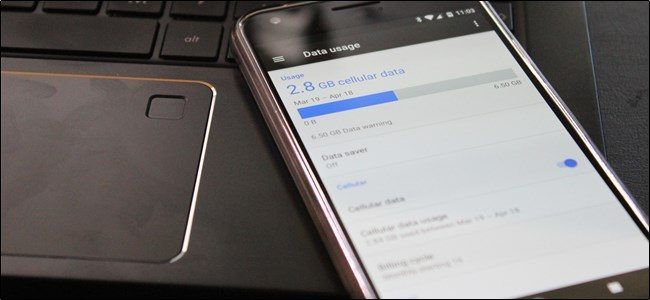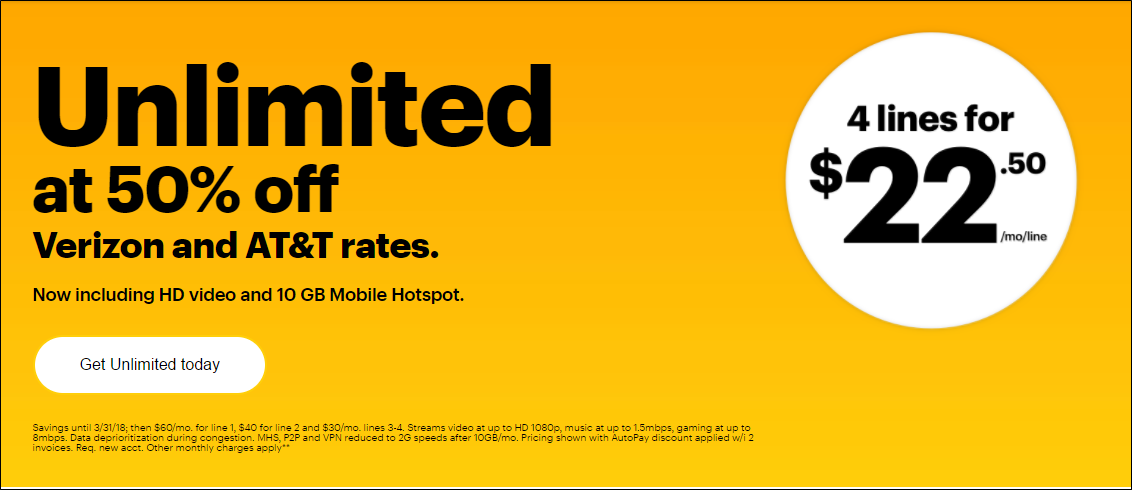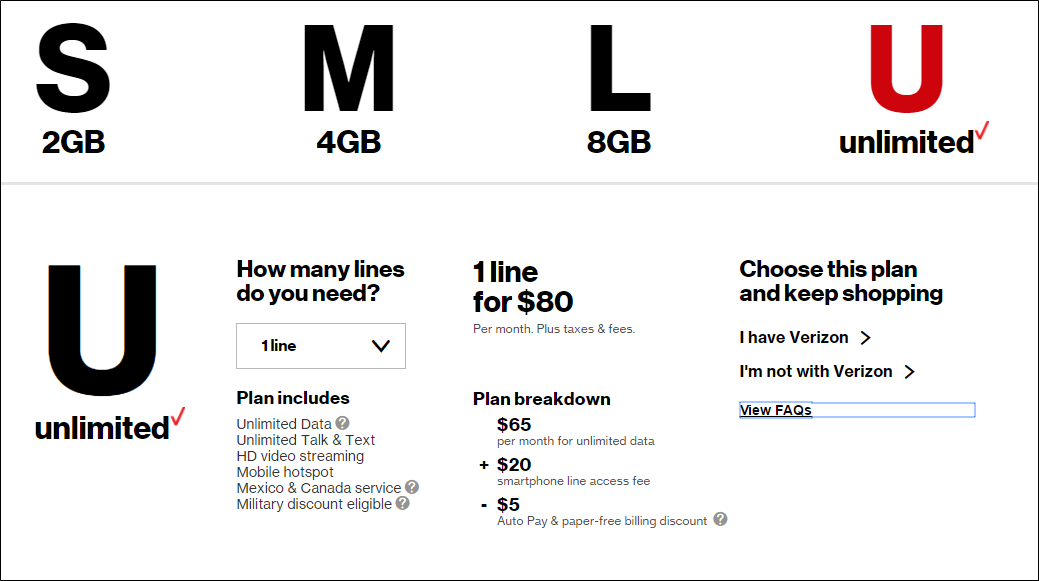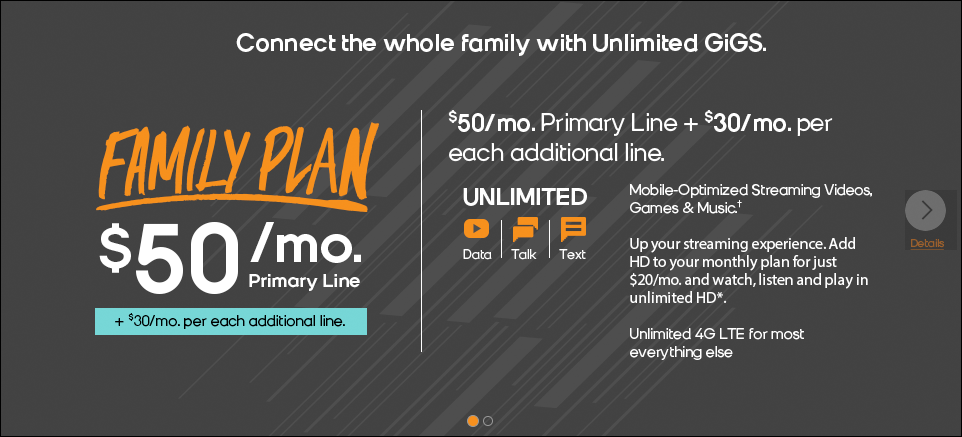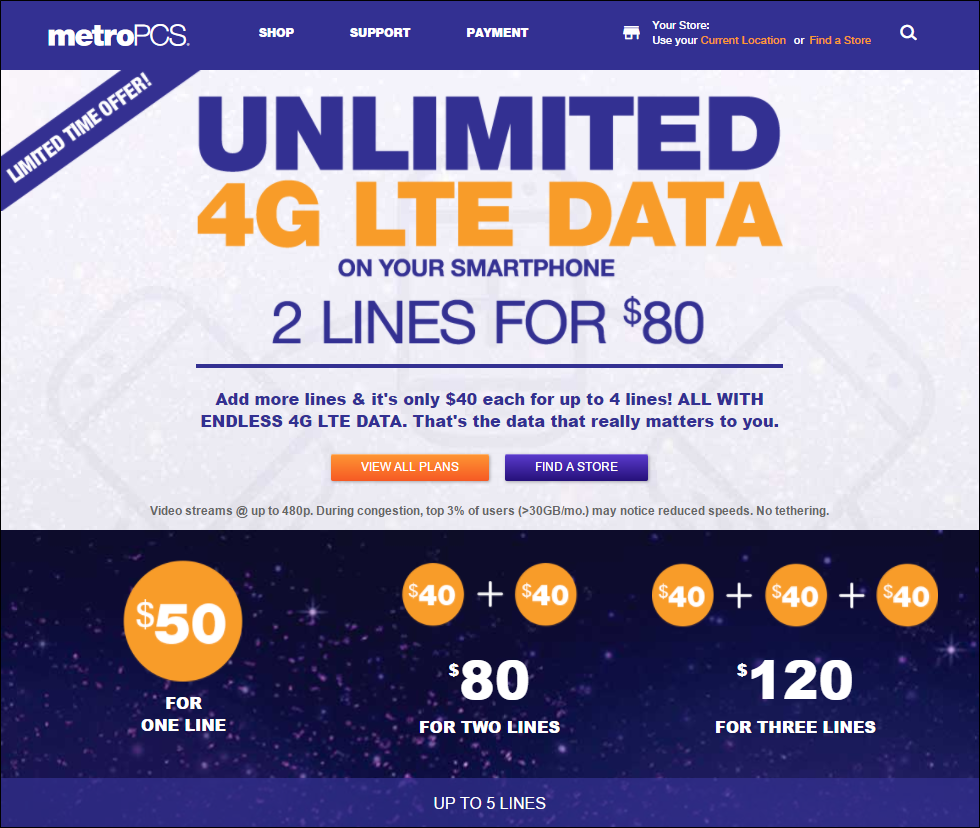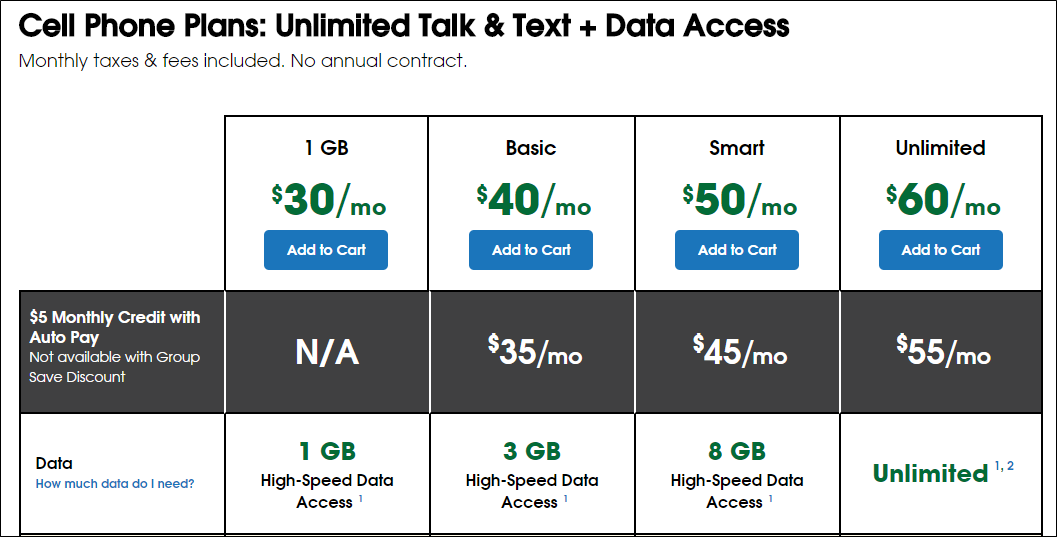All of a sudden, it seems all the mobile carriers are offering unlimited plans. So, how do they stack up?
When it comes to unlimited data plans on mobile networks, we've come full circle. They used to be the norm, but as mobile devices proliferated, carriers started capping data. Ostensibly, this was about managing network usage, but a bigger part of it was obviously optimizing their income. Now, these unlimited data plans are back, albeit with more catches than ever before. It makes it difficult to answer the question: "whose plan is the best?" What we can do is take a look at the details of each carrier's unlimited plan, so at least you can answer the question: "whose plan is best for me?"
What Does "Unlimited" Mean?
Before we get into the nuts and bolts, let's talk about how "unlimited" is defined in the modern world. Technically, the word means "without limits," which makes a lot of sense. In the mobile scene, however, it means anything but. Limits are everywhere in these new unlimited plans. Some carriers throttle your speed once you've used a certain amount of data in a month. Some "deprioritize" your service when the network is congested after a certain amount of data. Some place constraints on video quality. And some place speed caps on certain types of traffic---like gaming or music. Make no mistake about it: these plans are anything but "unlimited."
Still, these plans do free you from worrying about overage charges. At the end of the month, if you're always running out of data and are willing to deal with a few kinks here and there, then they're all you've got. At least there's an option now, anyway.
One thing worth noting before we get into the details is the difference between "throttling" and "deprioritizing." The former means that once you hit a certain amount of data, your speeds will slow down, generally dramatically. The latter, on the other hand, only means that you'll experience slowdown when the network is congested---during times of peak usage, your speeds will technically be throttled (again, only after you've used a certain amount of data). Once the network isn't as congested, your speeds should go back to normal.
With that, it's time to take a closer look.
The Carriers
While we typically think of the big four carriers for packages like this---Sprint, T-Mobile, AT&T, and Verizon. These four carriers offer post-paid plans, where you pay at the end of each month for services that you've used that month. There are also smaller carriers getting in on the unlimited train---like Boost Mobile, MetroPCS, and Cricket Wireless. These carriers offer pre-paid plans, where you pay ahead of time and then services you use get billed against what you've paid in.
We're going to talk about all seven of those carriers here, and each offers something a little different than the others. So buckle up, because there's going to be a lot to take in.
Post-Paid Plans
Let's keep this short and sweet, shall we? Starting with the big four, here's everything you need to know about Unlimited Data in 2017.
Sprint
Sprint has probably the most granular breakdown of rules and restrictions for their unlimited data, but the company also offers some decent incentives to make up for it. The company is also offering an interesting pricing incentive for the next year, which we'll discuss a bit further down below.
Pricing (taxes and fees not included):
- 1 Line: $60
- 2 Lines: $100
- 3 Lines: $130
- 4 Lines: $160
- 5 Lines: $190
Streaming:
- Unlimited Video @ 1080p
- Gaming capped at 8 Mbps
- Audio streaming capped at 1.5 Mbps
- Unlimited data for "most everything else"
Hotspot:
- 10 GB per line, limited to 2G speeds after limit reached
If you sign up for Sprint's unlimited plan right now, family plans---that's two or more lines---are just $90. That means whether you have two lines or five, you pay just $90 a month until March of 2018. After that, the above-listed pricing kicks in. That's a damn decent deal.
T-Mobile
T-Mobile has been making waves with its "All In" plans, which include taxes and fees in the base price. That means one thing for you: you know what you're going to pay, and that's how it is month after month.
Pricing (with autopay, taxes and fees included):
- 1 Line: $70
- 2 Lines: $100
- 3 Lines: $140
- 4 Lines: $160
Streaming:
- Unlimited HD video
- Unlimited music
- Speed deprioritized "during peak hours" after 30 GB
- 1 hour of free Gogo in-flight Wi-Fi
Hotspot:
- 10 GB per line, capped at 3G speeds after limit reached
In addition to this, T-Mobile customers can add the company's "One Plus" plan for $5 a month. This plan offers unlimited Gogo in-flight Wi-Fi, as well as Visual Voicemail. At the time of writing, this is actually a free upgrade, though that will likely change soon.
There's also a "One Plus International" add-on for $25 a month, which offers unlimited hotpots, along with unlimited calling and text to a slew of countries outside of the US.
AT&T
When it comes to making things complicated, AT&T always wears the crown, and its unlimited data plans are no different. The company currently offers two tiers of unlimited data: Unlimited Choice and Unlimited Plus. It's kind of absurd---two unlimited plans, one with slightly fewer limits than the other.
Pricing (Unlimited Plus - taxes and fees not included):
- 1 Line: $90
- 2 Lines: $145
- 3+ Lines: $20 additional per line after the first two
Streaming:
- Unlimited HD video (unspecified---720p or 1080p)
- Speeds "may" be throttled after 22 GB
Hotspot:
- 10 GB per line
Pricing (Unlimited Choice):
- 1 Line: $60
- 2 Lines: $115
- 3+ Lines: $20 additional per line after the first two
Streaming:
- Unlimited SD Video
- Speeds capped at 3 Mbps
Hotspot:
- Not included
With AT&T, the real question is: how many limits can you handle on your unlimited plan? The Unlimited Choice plan is borderline worthless, as it's missing key features that other companies provide as standard and usually for a similar price.
The Unlimited Plus plan is more in-line with what other carriers are doing, but at a significantly higher price. So, really, the takeaway here is that AT&T definitely won't be getting the "best unlimited plan" title from us.
Verizon
In an uncharacteristic twist, Verizon's unlimited plan is surprisingly straightforward. No red tape to speak of---just plain, simple, and easy-to-understand plan layouts. The problem? The same with everything else Verizon does: price.
Pricing (taxes and fees not included):
- 1 Line: $80
- 2 Lines: $140
- 3 Lines: $160
- 4 Lines: $180
Streaming:
- Unlimited HD video (unspecified---720p or 1080p)
- Unlimited Music
- Speed "may" be throttled after 22 GB
Hotspot:
- 10 GB per line
As you can see, Verizon has a slightly higher price than almost anyone else (aside from AT&T), but that must just be the price you pay for "the nation's most reliable 4G LTE Network." In other words, you get great coverage and pretty good unlimited terms---but you have to pay a premium for it.
Pre-Paid Plans
If you're into saving money by using mobile virtual network operator (MVNO) plans---which we highly recommend you at least check out, by the way---you'll want to pay attention here. Depending on your specific needs, you can get a lot of bang for your buck from the little guys.
Boost Mobile (Sprint MVNO)
Boost is technically owned by Sprint, but the company has its own take on the unlimited data scene. Pricing is good and coverage is decent. If you're considering a Sprint plan, Boost is definitely worth a look.
Pricing (taxes and fees included):
- 1 Line: $50
- 2 Lines: $80
- 3 Lines: $110
- 4+ lines: $30 additional per line
Streaming:
- Unlimited Music capped at 500 kbps
- Streaming games capped at 2 Mbps
- Includes streaming of "mobile optimized" video: 480p
- $20 extra per month for unlimited streaming of HD movies
Hotspot:
- 8 GB included
MetroPCS (T-Mobile MVNO)
MetroPCS is a T-Mobile MVNO, and the companies share a lot of the same philosophies when it comes to pricing. For example, taxes and fees are both including in their plans.
Pricing (taxes and fees included):
- 1 Line: $50
- 2 Lines: $80
- 3 Lines: $120
- 4+ Lines: $40 additional per line
Streaming:
- Video capped at 480p
- Speed throttled after 30 GB
Hotspot:
- 8GB included
Again, a decent pricing structure is in place here. Metro's plan isn't a terrible option, though Boost's is looking a little nicer for the same price. We'd definitely recommend taking a long, hard look at coverage maps to decide which one would be better choice for you.
Cricket Wireless (AT&T MVNO)
Cricket is an AT&T MVNO and shares the company's coverage, which is basically excellent. You're essentially getting AT&T coverage for nowhere near AT&T price, but of course there's a catch: speeds are capped at 8 Mbps on all Cricket plans, unlimited or not. As a result of the impressive coverage map, however, there's also a bit of a price hike over the other MVNOs on this list.
Pricing (taxes and fees included):
- 1 Line: $60
- 2 Lines: $110
- 3 Lines: $150
- 4 Lines: $180
- 5 Lines: $200
Streaming:
- Video capped at 480p, can be turned off (will use data when off)
- Cricket is always capped at 8 Mbps
- Speed may be throttled "during periods of network congestion" after 22GB
Hotspot:
- Not available on this plan
Cricket easily has the most family-friendly pricing structure, which each additional line offering a more significant saving than the last. If you're a single user, you can also save $5 a month by enabling autopay---unfortunately this doesn't work with the Group Discount.
But there's also no mobile hotspot available with this plan either, so if tethering is a feature you need, you'd be better off looking elsewhere.
The Verdict
Of course, the best unlimited plan for you comes down to your specific needs regarding the combination of features, coverage, and price. That makes it difficult to pinpoint one carrier as the clear winner here. But here are some takeaway thoughts:
- Verizon still offers the best coverage, especially in rural areas.
- Sprint and T-Mobile easily offer the best bang for your buck, assuming your area has good coverage.
- AT&T's plans are confusing, overpriced, and don't really offer anything that the other carriers don't.
- Like always, post-paid carriers can be an excellent choice. And Cricket's plan is the best of the bunch thanks to the broad coverage map. This is, of course, assuming you don't need hotspot.
And that's pretty much all there is to it: no straightforward answer, but hopefully things look a little clearer now that we've made that journey together.

